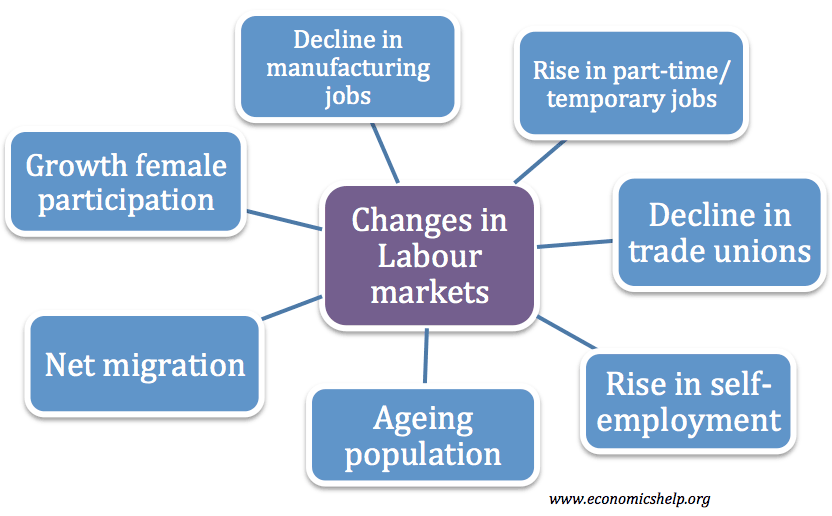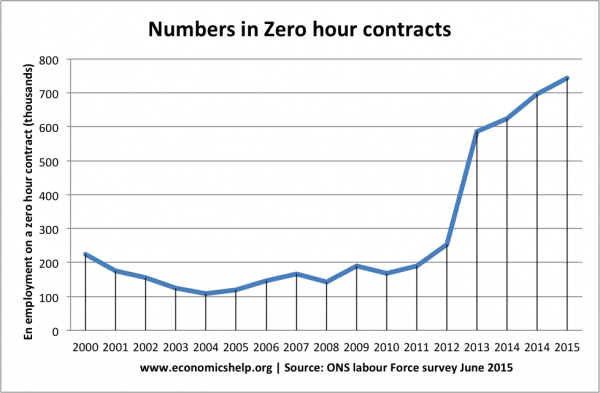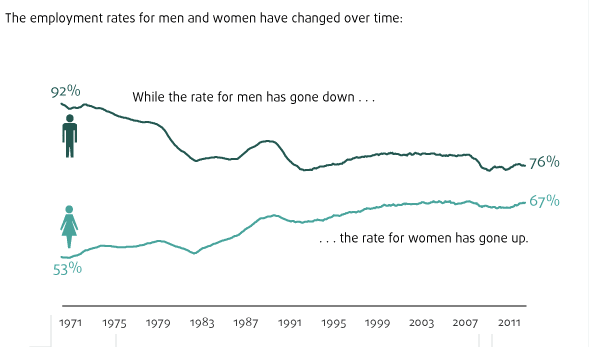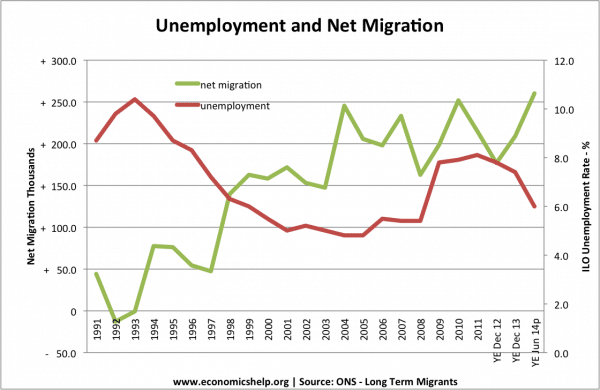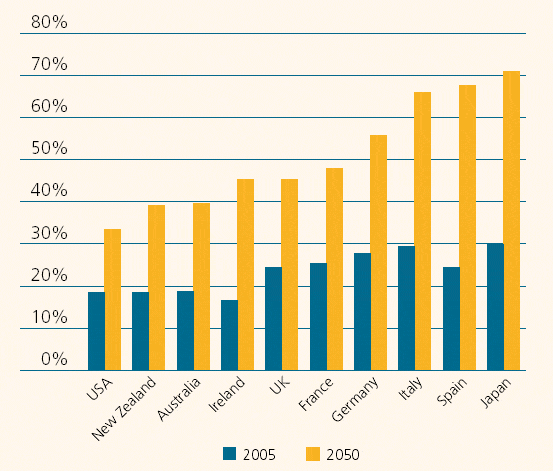In the post-war period, the UK labour market has seen many fundamental changes. In particular, we have seen a decline in full-time manual labour manufacturing jobs, and a growth in labour market flexibility. The current labour market is more diverse with more people working in self-employment, part-time jobs, zero hour contracts.
De-industrialisation
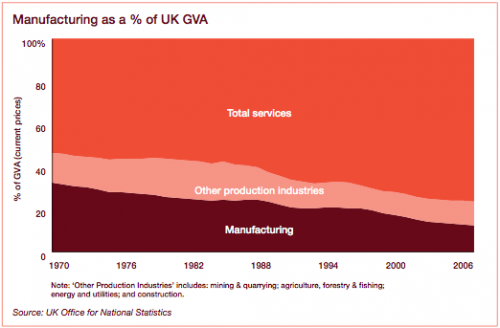
Since the early 1980s, there has been a decline in the relative size and importance of the manufacturing sector. Therefore it has caused the following effects:
- Less full time manufacturing jobs.
- Decline in trades unions. Trades unions used to have a strong union density in the manufacturing sector. However, it has been harder for trade unions to achieve high rates of membership in more fragmented service sector industries
- Structural unemployment. Those who have lost manual labour jobs have often struggled to find employment in different areas of the labour market. This is a particular problem in certain regions where the decline in manufacturing is highly concentrated.
- See more at: Relative decline of manufacturing.
Increase in the relative importance of service sector
As the manufacturing sector has declined, there has been an increase in the service sector and more jobs created in this area. This has caused the following effects:
- Unions are less influential. This is because it is more difficult to form unions in the service sector where there is more disorganisation of workers.
- Increase in part-time and flexible working hours which are needed for the service sector
- Increase in the proportion of women in the labour force because they tend to prefer service sector jobs to manufacturing.
Increased importance of the National Minimum Wage
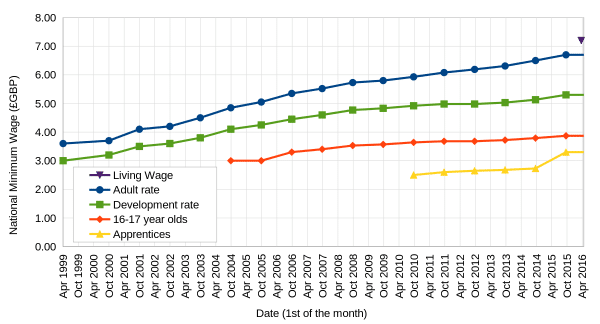
Since the National Minimum Wage was introduced in 1999, the National Minimum Wage has risen faster than average wages. Over one million workers now receive the National Minimum Wage of £7.20 (April 2016) and with forecasts, the NMW will continue to rise, it will become increasingly important in determining wages for the lowest paid. As the National Minimum Wage rises, it may also have an impact on wages slightly higher as firms feel a need to maintain wage differentials for more experienced workers.
See more: National Minimum Wage
Zero hour contracts
More people are working on zero-hour contracts, therefore there is less guarantee of fixed weekly pay. This means firms are not constrained to give a minimum number of paid hours. It increases flexibility, but also uncertainty.
Growth in female labour market participation
In the post-war period, there has been a marked rise in female participation rates in the labour market.
Source: ONS
We have seen a growth in female labour market participation and a decline in male participation. This is due to factors, such as
- Growth in part-time service sector jobs.
- Changing social expectations
- Women have children later, or not at all.
Impact of covid on labour market participation
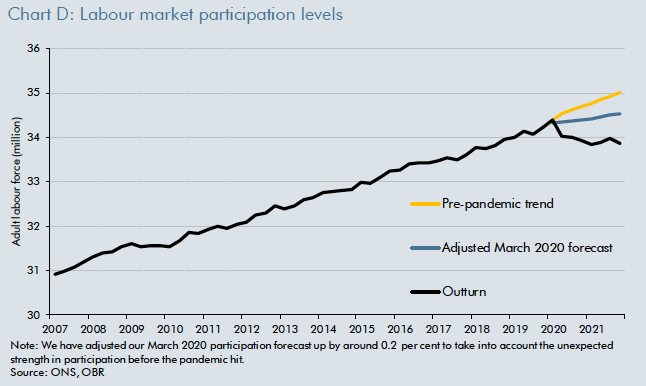
A striking feature of Covid and the shift to working from home is that it caused many people to re-evaluate their work-life balance. It has led to an unexpected fall in labour market participation. (See: Why are workers quitting their job post Covid?)
Net migration
The UK has consistently seen net migration, with workers from the EU and beyond entering the UK labour market, making labour markets more flexible. Migrants have often filled job vacancies in low paid areas, such as cleaners and jobs with skills shortages, such as plumbers. However, the net migration has put pressure on the housing market making certain areas, like London unattractive for low paid workers.
Self-employment
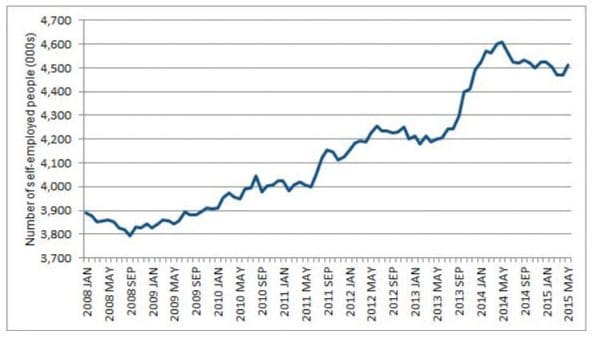
In the past decade, we have seen a growth in Self-employment levels, helped by:
- Low real wage growth, encouraging people to try their own business.
- Changing technology. More internet business and more opportunities to work as self-employment.
- Growth in firms using self-employment status to avoid certain taxes and labour market regulations
Structural unemployment
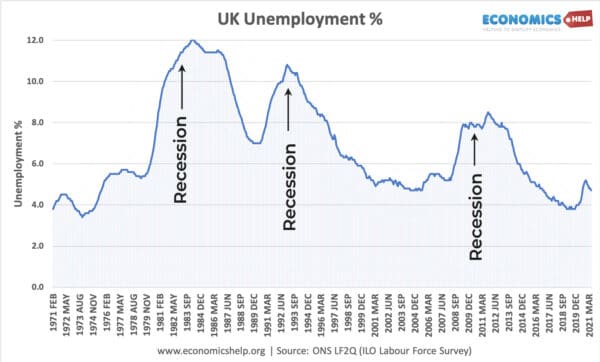
The 1980s saw a rise in average levels of unemployment and a rise in structural unemployment. However, since the 2008 recession, unemployment has fallen relatively quicker, suggesting a lower natural rate of unemployment. However, it has also been accompanied by low real wage growth and low productivity growth.
UK real wage growth
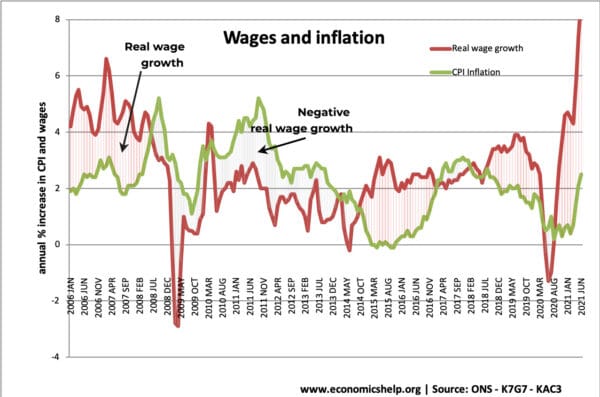
In the post-war period, the UK has seen real wages grow on average by 2.5% a year. However, since 2008, real wage growth has stalled. Whether this is a temporary blip or permanent change, is not clear yet.
Rising inequality
In the post-war period, income inequality fell. However, since the late 1970s, we have seen a reversal of this trend and rising real income inequality
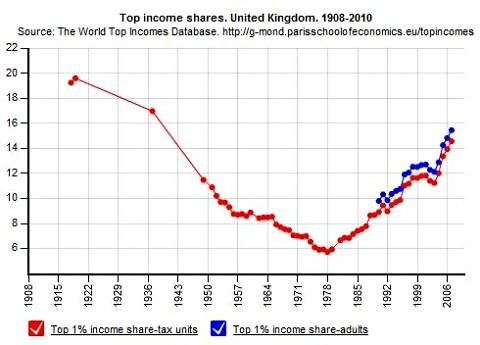
source: Paris School of Economics
Related: Rising inequality in the UK
Increase in % of old people
The UK, like many Western economies, have seen a growth in the percentage of people over 65. This has meant the average age of the workforce has increased. The retirement age has also been increased, leading to more workers working longer and some taking semi-retirement.
The rise in the average age has led to an increase in the dependency ratio; fewer workers have to support more economically inactive people.
Increase in labour market flexibility
There has been a decline in the number of fixed work contracts and more flexible work, which involves limited contracts, zero hour contracts, short-term contracts. The UK has a lightly regulated labour market compared to other European countries.
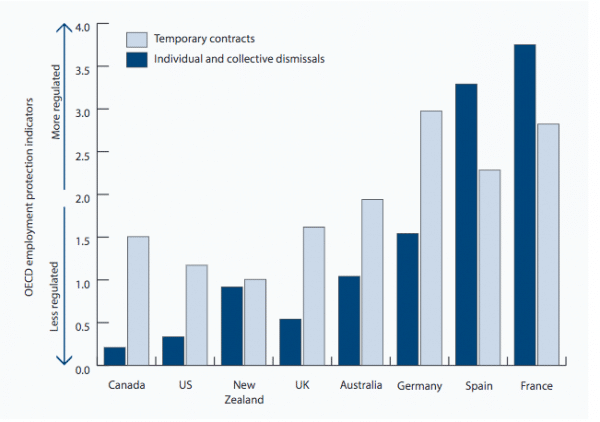
This flexibility is due to:
- Globalisation and increased competitive pressures causing downward pressure on wages.
- increase in the service sector, which tends to need more flexible contracts
- Limited regulation and protection for workers on short-term contracts. The UK scores low on tests for labour market protection on ‘individual protection’ ‘collective dismissal’ and temporary contracts’ See: CIPD survey into UK labour market
- Changing technology, which has increased the diversity of the economy and labour market. E.g. technology enables people to work from home.
- Government policies which have promoted more flexible labour markets, e.g. legislation making it harder for trade unions to operate and exemptions for EU labour market laws.
- Free movement of labour within the European Union and EU expansion into Eastern Europe.
- See also increased labour market flexibility
Related

